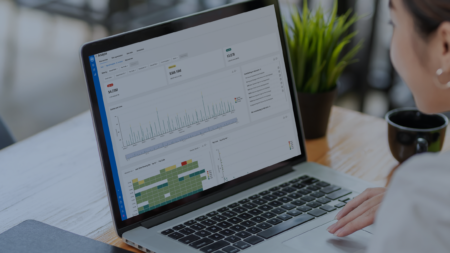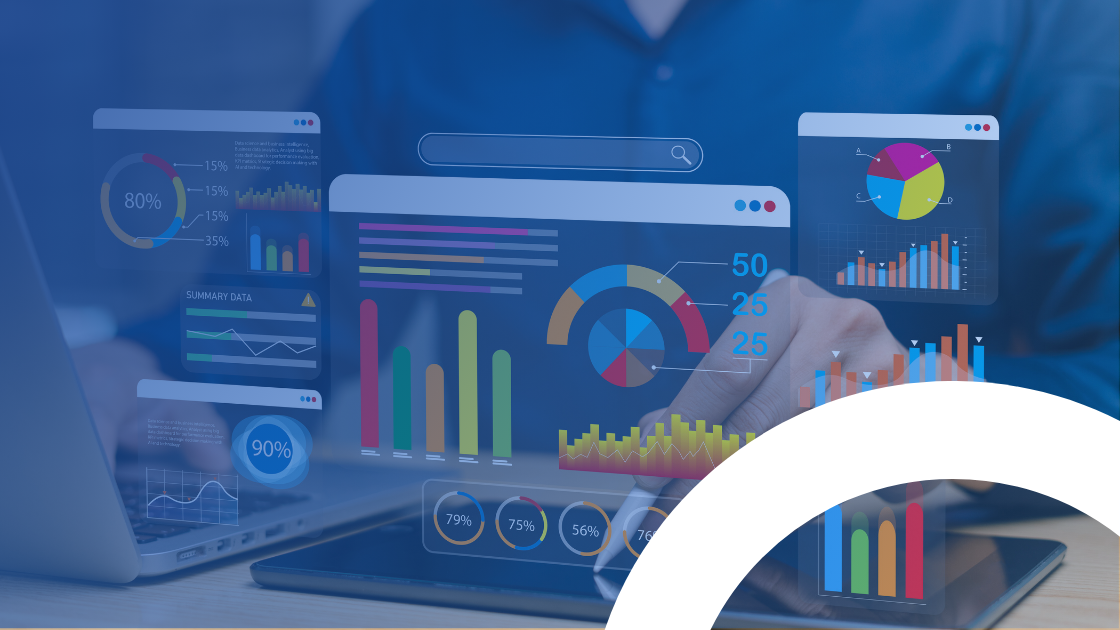The CFO role is no longer just about controlling costs and closing the books. Today’s finance leaders are enterprise architects—tasked with transforming fragmented systems into intelligent operations. Decision intelligence is the key to that transformation.
But here’s the catch: most decision intelligence content reads like a buzzword bingo card. What CFOs actually need is a practical, outcome-driven approach to turn data into decisions—without drowning in dashboards or waiting on IT.
This blog breaks down how to implement a decision intelligence framework that drives measurable impact—from financial forecasting and fraud detection to audit quality and resource allocation.
What Is Decision Intelligence?
Decision intelligence is the application of AI and data analytics to help organizations make faster, smarter, and more confident decisions. Unlike traditional business intelligence or static dashboards, it combines continuous data ingestion, unsupervised anomaly detection, and automated insights to help CFOs act with foresight.
MindBridge plays a pivotal role here. MindBridge is an AI-powered decision intelligence platform for finance and audit, enabling continuous monitoring of financial data and surfacing risk across ledgers, subledgers, and business units.
For CFOs, that means:
- Eliminating manual data wrangling
- Catching financial leakage and fraud sooner
- Accelerating planning cycles with predictive insights
- Strengthening governance without slowing down the business
It’s not about dashboards—it’s about decisive moves made with confidence.
Why Finance Needs Decision Intelligence Now
In a typical mid-to-large enterprise, the velocity and volume of financial transactions create blind spots. Errors and anomalies often go undetected until audit cycles catch them—too late to prevent loss. Siloed data leads to inconsistent forecasts and limited visibility across business units, while manual controls delay critical decisions and keep teams reactive instead of strategic.
Decision intelligence bridges these gaps by enabling always-on risk assessment, so every transaction is continuously monitored—not just sampled during audits. It supports root cause analysis that explains not just what went wrong, but why. And it creates strategic visibility by connecting disparate financial data sources into one decision-ready view.
The Components of a Financial Decision Intelligence Framework
A modern decision intelligence framework for finance includes:
Unified Data Access
MindBridge connects structured and unstructured data from general ledgers, subledgers (AP, AR, T&E), and supporting systems. This creates a connected view of financial activity across the enterprise.
Unsupervised Machine Learning
Instead of relying on rules or historic labels, MindBridge leverages unsupervised learning to detect both known errors and previously unseen anomalies in financial records.
Continuous Risk Assessment
Transaction streams are monitored 24/7. Alerts are prioritized by risk severity, enabling CFOs to address issues before they snowball.
Explainable Insights
Every flagged risk includes traceable evidence. Finance and audit teams can drill down into the ‘why’—empowering confident, defensible decisions.
Workflow Integration
Insights integrate into enterprise systems and processes, ensuring data flows seamlessly from detection to action.
Implementing Decision Intelligence in Finance: A Practical Path
Here’s how top finance teams are putting decision intelligence to work:
Start with a Focused Use Case
Begin where you’ll see the most immediate impact—like detecting underbilled revenue, managing expense policy compliance, or accelerating month-end close.
Assess Data Readiness
Inventory your systems. Where is critical data trapped? Can it be normalized, connected, and enriched for analysis?
Choose the Right Platform
Look for AI-powered tools purpose-built for financial data—not generative AI or generic ML engines. Transparency and explainability matter.
Create Action Loops, Not Reports
The goal isn’t to produce more dashboards. It’s to embed alerts, recommendations, and context into workflows.
Upskill and Operationalize
Equip teams to interpret AI-driven insights. Define ownership. Automate repetitive tasks. Refine over time.
Real-World Examples
- Revenue Oversight: A CFO identified millions in underbilled revenue by detecting inconsistent billing patterns across regions and product lines.
- Expense Management: MindBridge flagged recurring T&E anomalies—highlighting policy violations and unauthorized spend.
- Fraud Prevention: Early detection of duplicate vendor payments and split transactions helped avoid significant financial loss.
Explore how MindBridge automates manual journal entry validation and accounts payable anomaly detection as part of a robust decision intelligence strategy.
Overcoming Common Barriers
Implementation isn’t plug-and-play. CFOs must navigate:
- Data silos — Break them down with connected systems or smart ingestion layers.
- Skepticism about AI — Build trust by using explainable models and proving quick wins.
- Change fatigue — Anchor decision intelligence initiatives in specific business outcomes, not abstract transformation.
- Talent gaps — Upskill finance pros with AI literacy or partner with platforms that abstract complexity.
The most effective CFOs launch targeted pilots—like automating journal entry validation or continuous AP monitoring—then scale based on results. The key is to prove ROI fast and build momentum from there.
What Success Looks Like
A well-executed decision intelligence framework delivers:
- Continuous financial forecasting automation that adapts to live market conditions
- Faster, more defensible audit risk assessments across all GL and subledger data
- Reduced fraud and error exposure through AI-driven anomaly detection
- Scalable workflows that replace spreadsheet firefighting with proactive insight loops
One MindBridge customer cut month-end close from 12 days to 5. Another flagged $2.3M in duplicate payments before they were processed. This isn’t potential—it’s already happening.
This Is CFO Strategy, Not Just Tech
Decision intelligence isn’t a tool—it’s a mindset shift.
It’s how finance leaders become real-time collaborators in enterprise value creation. It’s how risk teams move from reactive to preventative. And it’s how CFOs architect the next generation of intelligent finance.
MindBridge powers this shift with AI that sees what others miss. Whether it’s anomalies in GL transactions or breakdowns in revenue recognition, our platform continuously analyzes financial data for patterns, risk, and hidden value—giving CFOs the insights they need to move first.
The future of finance isn’t just automated—it’s decision intelligent.
Book a demo today, and see why MindBridge is trusted by global enterprises, audit firms, and government agencies to power strategic financial decisions with confidence.
Frequently Asked Questions About Decision Intelligence
What is decision intelligence in finance?
Decision intelligence applies AI and analytics to financial data to drive better business decisions. It helps CFOs monitor risk, detect anomalies, and guide strategy in real time.
How does decision intelligence differ from business intelligence?
Business intelligence surfaces what happened. Decision intelligence explains why it happened and what to do next—often automating the next best action.
What are examples of decision intelligence use cases?
Examples include AI-driven budget planning, fraud detection and prevention, financial forecasting automation, and continuous audit workflows.
Is decision intelligence the future of finance?
Yes. As transaction volumes grow, finance teams need real-time, AI-powered tools to reduce risk, improve efficiency, and steer strategy confidently.



